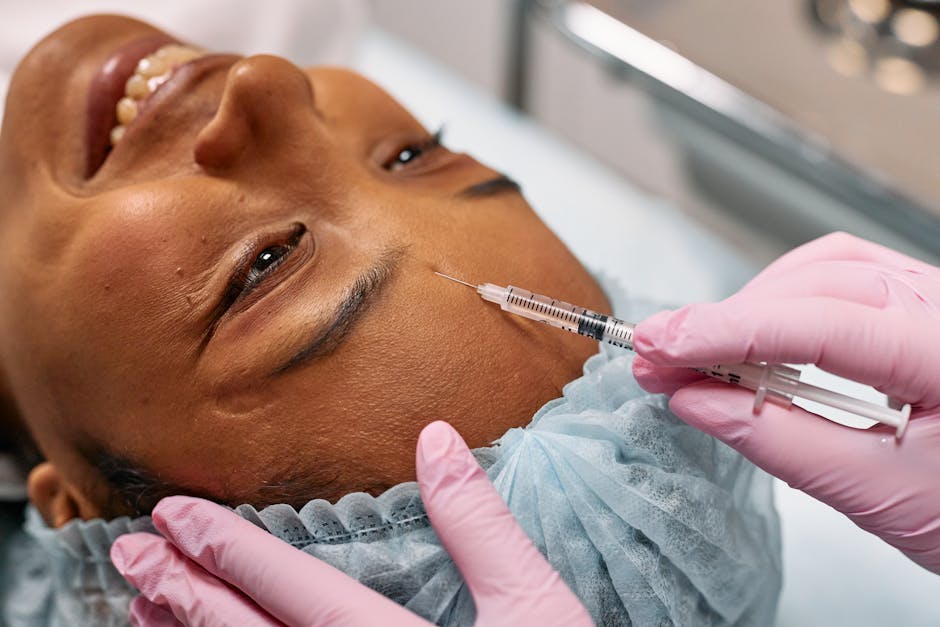How Often Should You Get Botox Treatments?
Botox has become a household name in the realm of cosmetic treatments, known for its ability to smooth wrinkles and rejuvenate the skin. However, one crucial question remains for both new and seasoned users: How often should you get Botox treatments? In this comprehensive guide, we’ll delve into the factors influencing the frequency of Botox injections, ensuring you achieve optimal results while maintaining your skin’s health.
Understanding Botox: What You Need to Know
Botox, or Botulinum Toxin, is a neurotoxic protein used in both medical and cosmetic procedures. Its primary function in cosmetics is to temporarily paralyze muscle activity, thereby reducing the appearance of facial wrinkles. According to the American Society of Plastic Surgeons, over 4.4 million Botox procedures were performed in the United States in 2020 alone, underscoring its popularity and effectiveness.
The Science Behind Botox
When Botox is injected into the skin, it blocks the release of acetylcholine, a neurotransmitter responsible for muscle contractions. This results in a temporary relaxation of the targeted muscles, which smooths out wrinkles and fine lines. The effects are not permanent, which is why repeat treatments are necessary to maintain results.
Factors Influencing Botox Frequency
Several factors can influence how often you should get Botox treatments. These include:
Age and Skin Condition
Age plays a significant role in determining Botox frequency. Younger individuals with fewer wrinkles may require less frequent treatments compared to older individuals with more pronounced lines. Additionally, the overall condition of your skin, including elasticity and sun damage, can affect how long the effects of Botox last.
Metabolism
Your body’s metabolism can also impact the longevity of Botox results. Individuals with a faster metabolism may find that the effects of Botox wear off more quickly, necessitating more frequent sessions.
Lifestyle Choices
Lifestyle factors such as stress levels, smoking, and sun exposure can affect how long Botox lasts. For instance, high levels of stress and frequent sun exposure can accelerate the appearance of wrinkles, potentially requiring more frequent treatments.
Desired Results
The specific results you hope to achieve with Botox will also dictate treatment frequency. Some individuals prefer a subtle, natural look and may opt for less frequent treatments, while others desire a more dramatic change and may schedule sessions more regularly.
Recommended Botox Treatment Frequency
While individual needs vary, there are general guidelines for how often Botox treatments should be administered:
Every 3 to 4 Months
On average, Botox treatments are recommended every 3 to 4 months. This timeframe allows the effects to wear off gradually, ensuring continuous results without abrupt changes in appearance.
Evaluating Your Results
It’s important to evaluate your results after each treatment. If you notice that the effects are lasting longer than expected, you may be able to extend the time between sessions. Conversely, if the effects are wearing off sooner, it may be time to consult with your provider about adjusting your treatment schedule.
Tips for Maximizing Botox Results
To ensure you get the most out of your Botox treatments, consider the following tips:
Choose a Qualified Provider
Always choose a reputable and experienced provider for your Botox treatments. A skilled practitioner will ensure that the injections are administered safely and effectively, maximizing results and minimizing risks.
Maintain a Healthy Lifestyle
Adopting a healthy lifestyle can prolong the effects of Botox. This includes avoiding excessive sun exposure, managing stress, staying hydrated, and following a balanced diet.
Follow Post-Treatment Instructions
Your provider will give you specific instructions to follow after each treatment. Adhering to these guidelines, such as avoiding strenuous activity and not touching the treated area, can enhance and extend the benefits of Botox.
Conclusion: Finding Your Ideal Botox Schedule
Determining how often you should get Botox treatments ultimately depends on a combination of factors, including your age, lifestyle, and desired results. By consulting with a qualified provider and evaluating your outcomes, you can develop a personalized treatment plan that keeps your skin looking youthful and refreshed.
Remember, Botox is not a one-size-fits-all solution. Regular assessments and open communication with your provider will ensure that your Botox regimen is tailored to your unique needs and goals. Whether you’re new to Botox or a seasoned pro, understanding the nuances of treatment frequency will help you achieve the best possible results.

